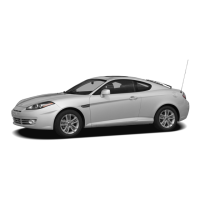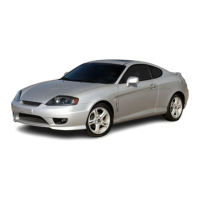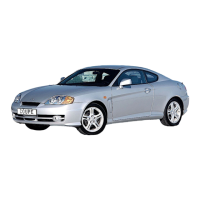
Do you have a question about the Hyundai Coupe Tiburon 2005 and is the answer not in the manual?
| Brand | Hyundai |
|---|---|
| Model | Coupe Tiburon 2005 |
| Category | Automobile |
| Language | English |
Guidance on selecting appropriate fuels for optimal vehicle performance.
Information on operating locks and managing spare keys for convenience and security.
Details on locking and unlocking doors using keys or internal switches for security.
Precautions and proper usage guidelines for all occupants to ensure safety in accidents.
Overview of gauges and warning lights on the instrument panel for vehicle status.
How to set, cancel, resume, and reset cruise control speeds.
Pre-drive checks and ensuring the vehicle is ready for operation.
Shifting gears and using the clutch in a manual transmission.
Suggestions for achieving optimal braking performance and prolonging brake life.
How ABS prevents wheel lock-up for increased control during braking.
How ESP helps maintain vehicle control under adverse conditions.
Tips for saving fuel and maximizing mileage through efficient driving habits.
Troubleshooting steps when the engine fails to start or crank.
Procedures for safely jump-starting a vehicle with a discharged battery.
Steps to take if the engine's temperature gauge indicates overheating.
Step-by-step instructions for changing a flat tire.
Recommendations for proper towing procedures to avoid vehicle damage.
Understanding the causes of corrosion and how Hyundai vehicles are protected.
Practical tips for preventing corrosion, focusing on keeping the car clean.
Guidelines for washing and waxing the car's exterior to maintain paint finish.
Methods for cleaning vinyl upholstery, leather upholstery, and carpets.
Information on routine maintenance schedules and their importance for vehicle longevity.
Details on inspection, adjustment, and replacement procedures at specified intervals.
How severe driving conditions require more frequent maintenance.
Explanations for specific scheduled maintenance tasks like oil changes and belt checks.
Identification of key components and fluid reservoirs in the engine bay.
Procedures for checking and adding engine oil, including recommended types and quantities.
Step-by-step guide for replacing engine oil and filter.
How to check coolant level and the procedure for changing engine coolant.
How to identify and replace blown fuses in the vehicle.
Safety precautions and procedures for checking and maintaining the battery.
Steps for adjusting headlight alignment after replacement or repair.
Diagrams and descriptions of fuse panel layouts.
Overview of the vehicle's emission control systems.
Information on the catalytic converter's function and precautions for its use.
Correct tire pressures for optimal safety, wear, and stability.
How to identify worn tires and when they need replacement.
Location and contents of the spare tire and tool kit.
Key dimensions of the vehicle including length, width, and wheelbase.
Tire sizes and options available for the vehicle.
Detailed specifications for engine type, bore, displacement, and firing order.
Recommended fluids and quantities for engine oil, transaxle, power steering, brakes, and coolant.












